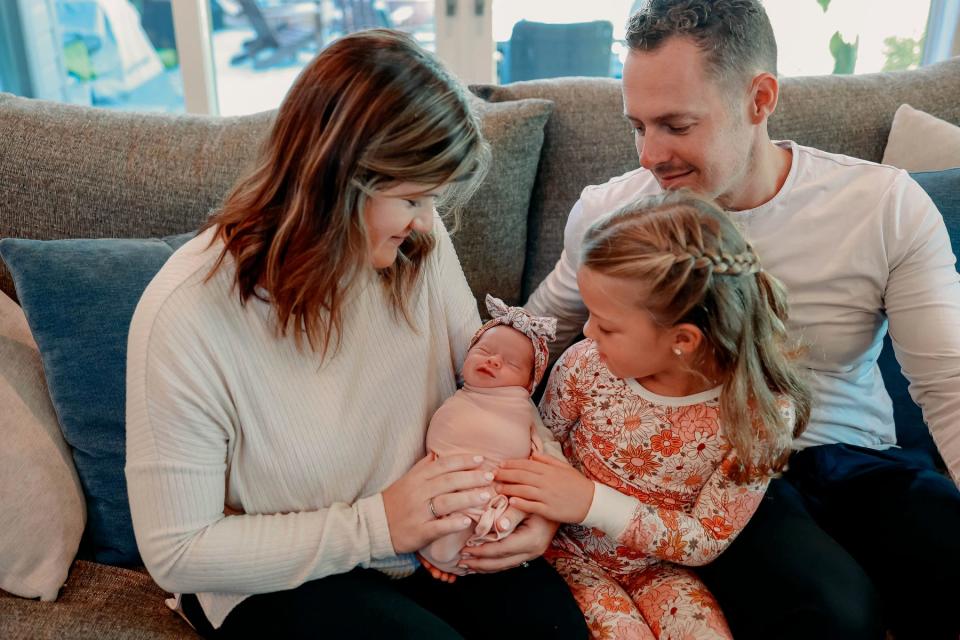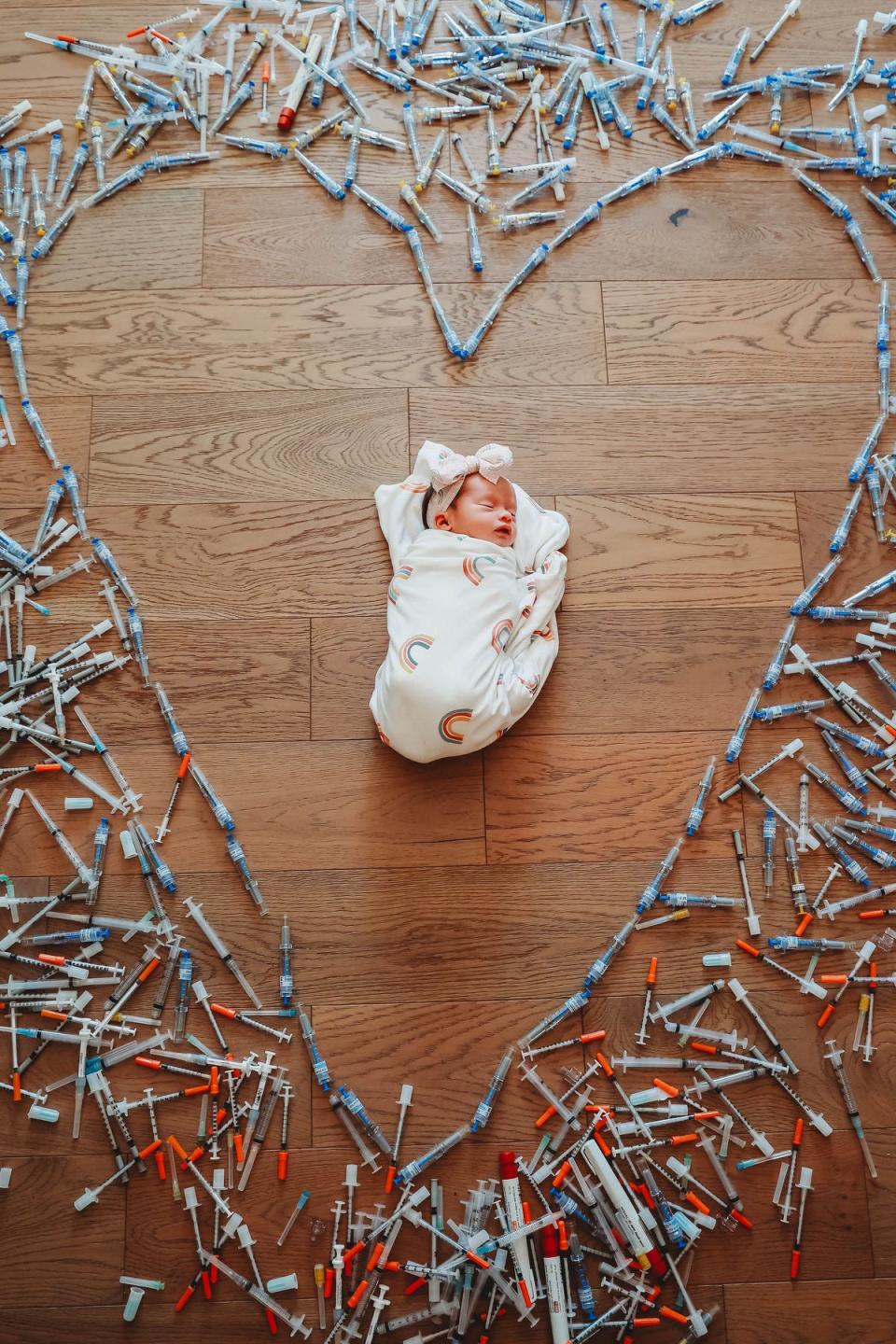I 'survived' infertility. But not before it shaped my perspective on everything.
"One day you will tell your story of how you've overcome what you're going through now, and it will become part of someone else's survival guide." –Brené Brown
I am now, very luckily a mom to two beautiful little girls. And if you ran into my family at a restaurant, you would not look at us and see the painful and rewarding journey that brought us together.
It took nearly 10 years, multiple surgeries, countless tests and procedures, hundreds of shots and so much heartbreak along the way to build our little unit.
Sunday is National Infertility Survival Day, which is purposefully recognized on the Sunday before Mother’s Day – a day that can be painful for those struggling to grow their families. The day is meant to acknowledge those fighting infertility and celebrate their wins, both big and small.
Most people’s battle wounds aren’t visible. We "survived" infertility, but not before it made its mark on us forever.

We are 1 in 100
My family’s struggles with fertility and pregnancy loss began in 2015 when my husband and I decided to start trying for kids. I quickly became pregnant, but unfortunately it ended in miscarriage.
Miscarriages are common, but nonetheless heartbreaking. Miscarriages, defined as the sudden loss of a pregnancy before the 20th week, occur in about 10% to 20% of known pregnancies, according to the Mayo Clinic, but the number is likely higher.
We tried again and I became pregnant again shortly after. In September 2016, we welcomed our silly and smart daughter. She is now 7.
At that point, we didn’t think we would be the roughly 1 in 6 worldwide affected by infertility or the about 1 in 100 pregnant people who have repeat miscarriages.
But waiting in the darkness was an evil monster of infertility: secondary infertility, a term used for someone who is unable to get pregnant or carry a baby term after previously giving birth.
World Autism Day: To the parents of a newly-diagnosed child, one day you will bake a cake
Trying for baby No. 2
In 2018, we began trying to add another member to our family. Again, I quickly became pregnant, but again, the pregnancy ended in miscarriage.
My OGBYN called it a fluke and we tried again. Another miscarriage.

After that, my doctor recommended a pregnancy loss panel. Through that we discovered I had a couple genetic mutations, MTHFR and Factor V Leiden, both which can impact pregnancies and blood flow. Still, our case was mostly categorized as “unexplained.”
With those test results, we added a few medications into our treatment plan and tried again.
Another pregnancy. Another loss.
At that point, my doctor referred us to a fertility specialist.
A chance with IVF
It was in 2020, amid a global pandemic, that we decided to pursue in-vitro fertilization, the medical procedure that combines eggs and sperm in a lab dish before transferring the fertilized eggs into the uterus. Thanks to fertility insurance offered through my company, we were able to undergo the process. Without insurance, IVF can cost upwards of $25,000, which we not have been able to afford.
We hoped IVF would increase our odds of success, but what we didn’t realize at the time, which later became very clear, is that IVF offers only a chance at pregnancy and a live birth. Nothing was guaranteed.
What is IVF? Explaining the procedure in Alabama's controversial Supreme Court ruling
Our journey with IVF was a roller coaster of ups and downs. We ended up with four healthy embryos that we froze for later transfers.
Doctors say it can take patients three embryos to equal one live birth. For us it took all four.

Our first transfer resulted in an empty sac pregnancy. Our second transfer worked, but it also ended in miscarriage. We named that baby, a boy, Jack. He made it to a little over 9 weeks and we got to hear his heartbeat a few times before he left us. We miss him.
Our third transfer was a biochemical pregnancy.
The little embryo that could
It all came down to our last little frozen embryo. At that point, we switched doctors and had a “throw everything at it” plan.
In December 2022, we transferred that last embryo. This was it. If it didn’t work, we would end our IVF journey and move on as a perfect family of three.
It worked.

Week by week, we held our breath waiting to hear baby’s heartbeat. My belly started to swell but I still didn’t believe it. I felt her little kicks and then became obsessed with counting them, wondering if she was OK. We never made a pregnancy announcement and we barely set up a nursery. We just held our breath and prayed she would make it.
On August 7, 2023, our fiery, feisty second daughter came into this world. She was really, really here. She is now 9 months old.
You are not alone
Survivors of infertility all look different.
Some are parents, some are not. Some share their stories, while others sneak away into the bathroom for a good cry in private.
There are a lot of us out there. And we don’t have the choice but to survive – and thrive – throughout the process.
I would never wish this evil on anyone, but I am grateful for the perspective I gained from our infertility journey. I have more empathy. I have more patience. I have more faith.
And mostly, I have an experience that can help others.
I "survived" infertility and I am soaking up this beautiful life with my family. But you’ll still find me in the trenches with my fellow warriors, holding their hands, crying, and fighting the unfair battle.
You are not alone. We got this.
Amy Haneline is a trending editor with USA TODAY. You can reach her at [email protected] or on Instagram at @amybhaneline.
This article originally appeared on USA TODAY: Infertility Survival Day: Mom shares story of miscarriages, loss, hope
